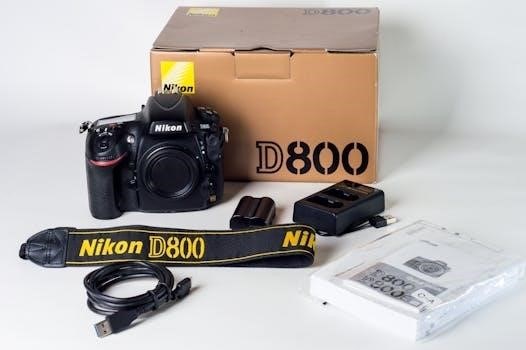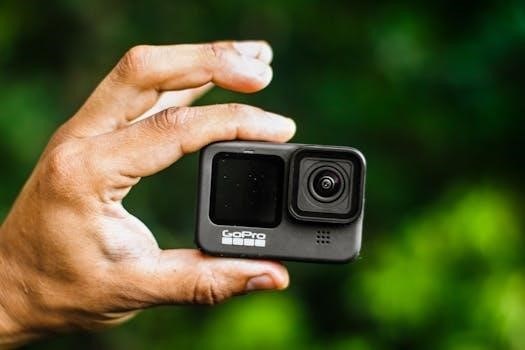XNX Universal Transmitter User Manual⁚ A Comprehensive Guide
Welcome to the comprehensive guide for the XNX Universal Transmitter. This manual provides detailed information on installation, operation, maintenance, and advanced features. Refer to the included Resource CD (Honeywell part number 1998-0748) for additional documentation and support resources for gas detection applications.
The XNX Universal Transmitter represents a versatile and reliable solution for a wide array of gas detection needs across various industrial settings. Designed for compatibility with Honeywell Analytics’ extensive range of gas sensors, including Searchline Excel, Optima Plus, and Sensepoint, the XNX offers unparalleled flexibility. This adaptability ensures seamless integration into existing systems, providing a unified interface for all gas detection tasks.
The XNX’s universal design allows configuration for various gas detection applications. It supports industry-standard communication protocols like HART and Foundation Fieldbus. This facilitates easy communication with host control systems. With hazardous area certifications, the XNX is suitable for deployment in demanding environments. This user manual serves as a comprehensive guide, offering detailed instructions on installation, operation, maintenance, and troubleshooting. Refer to the technical manual for in-depth information.
Understanding the Technical Manual
This technical manual serves as a comprehensive resource for understanding the intricacies of the XNX Universal Transmitter. It provides detailed information essential for the proper installation, operation, and maintenance of the device. Users are expected to have a thorough understanding of gas detection principles and associated safety regulations before using this manual. The manual covers various aspects, including hardware specifications, configuration procedures, communication protocols, and troubleshooting guidelines.
It assumes familiarity with Foundation Fieldbus protocol and host control systems. The manual also references other relevant documents, such as sensor-specific manuals for Sensepoint Optima Plus and Searchline Excel. These documents provide additional details on specific components. This technical manual aims to provide a single point of reference. It enables users to effectively utilize the XNX Universal Transmitter in their gas detection applications. Always refer to the latest version available on the Resource CD.

Installation and Operation
This section details the procedures for installing and operating the XNX Universal Transmitter. It includes guidance on initial setup, sensor connections (Searchline Excel, Optima Plus, Sensepoint), and communication protocols like HART and Foundation Fieldbus.
Initial Setup and Configuration
Before operating the XNX Universal Transmitter, a meticulous initial setup and configuration process are paramount. Begin by carefully unpacking the device and verifying that all components are present, referencing the packing list provided with the unit. Next, consult the XNX Universal Transmitter Technical Manual to ensure a comprehensive understanding of the device’s hardware components and their respective functions.
Power up the transmitter and access the configuration menu, typically through the local display or a connected device running the XNX Device Type Manager (DTM). Configure network settings, including IP address, subnet mask, and gateway, aligning with your network infrastructure. Establish communication protocols, such as HART or Foundation Fieldbus, based on your system requirements. Calibrate sensors based on the manufacturer’s recommendations.
Finally, confirm that the settings are saved and that the device is functioning correctly.
Connecting Sensors⁚ Searchline Excel, Optima Plus, and Sensepoint
The XNX Universal Transmitter is designed for versatile sensor connectivity, supporting a range of Honeywell Analytics sensors, including Searchline Excel, Optima Plus, and Sensepoint. Proper sensor connection is crucial for accurate gas detection. Before commencing, consult the respective sensor’s manual for specific wiring diagrams and installation guidelines.
For Searchline Excel, ensure correct alignment and secure mounting according to the technical manual. With Optima Plus, pay attention to the explosion-proof housing requirements and the correct polarity of the wiring. For Sensepoint sensors, verify compatibility with the transmitter and follow the recommended wiring configurations.
After physical connections, configure the transmitter to recognize the connected sensor type and range. Utilize the XNX Device Type Manager (DTM) for seamless integration and calibration, ensuring accurate readings and reliable performance.
Communication Protocols⁚ HART and Foundation Fieldbus
The XNX Universal Transmitter supports industry-standard communication protocols, including HART and Foundation Fieldbus, facilitating seamless integration with various control systems. HART communication allows for remote configuration, diagnostics, and data retrieval, enabling efficient monitoring and maintenance. Refer to the XNX Universal Transmitter HART User Manual for detailed instructions on setup and operation.
For Foundation Fieldbus, ensure a thorough understanding of the protocol’s operating principles and compatibility with the host control system. Contact the host system vendor for specific configuration questions. Proper configuration is essential for reliable data transmission and control. The XNX DTM provides tools for configuring Foundation Fieldbus parameters.
Users should consult the relevant technical manuals for each protocol to ensure proper implementation and troubleshooting. Utilizing these communication protocols effectively maximizes the transmitter’s capabilities and enhances overall system performance.
Maintenance and Troubleshooting
This section covers essential maintenance procedures and troubleshooting techniques for the XNX Universal Transmitter. Refer to the technical manual for detailed diagnostic information, error codes, and alarm reset procedures ensuring optimal performance.
Diagnostic Information and Error Codes
Understanding the diagnostic information and error codes generated by the XNX Universal Transmitter is crucial for effective maintenance and troubleshooting. This section provides a comprehensive overview of common error codes, their potential causes, and recommended corrective actions. Consult the XNX Universal Transmitter Technical Manual for an extensive list of codes.
The transmitter’s display will show specific error codes, aiding in pinpointing the source of the problem, whether it’s sensor malfunction, communication issues, or power supply concerns. Proper interpretation ensures timely intervention, preventing downtime. Always cross-reference the error code with the technical manual for detailed explanations.
Regularly reviewing the diagnostic logs can also reveal patterns indicative of potential future problems. Addressing these proactively will maintain optimal performance. Remember to document any troubleshooting steps taken for future reference and to help identify recurring issues with the transmitter.
Alarm Reset Procedures
Following an alarm event, resetting the XNX Universal Transmitter is a critical step to restore normal operation. This section outlines the procedures for effectively resetting alarms, ensuring the system is ready for continued monitoring. Refer to the XNX Universal Transmitter Technical Manual for detailed instructions and safety precautions.
The alarm reset can typically be performed through the transmitter’s display using the magnetic switches. However, the specific steps may vary depending on the configuration and the nature of the alarm. Always investigate the cause of the alarm before attempting a reset to prevent recurrence.
After resetting, carefully observe the system to confirm that the alarm condition has been resolved and that the transmitter is functioning correctly. Document the reset procedure and any relevant observations for future analysis. If the alarm persists, consult the troubleshooting section of the manual for further guidance.

Advanced Features and Configuration
Explore the XNX Universal Transmitter’s capabilities. Customize settings using the DTM for gas detection applications. Enhance functionality and optimize for specific monitoring needs, using the technical manual for detailed guidance.
Using the XNX Device Type Manager (DTM)
The XNX Device Type Manager (DTM) provides a user-friendly interface for configuring and managing your XNX Universal Transmitter. This software tool enables comprehensive device diagnostics, parameter adjustments, and firmware updates, ensuring optimal performance. Begin by selecting the appropriate XNX device type within the DTM to establish communication. The DTM allows you to configure alarm settings, calibrate sensors, and monitor real-time data.
Leverage the DTM’s advanced features to tailor the transmitter’s behavior to your specific gas detection requirements. This includes adjusting response times, setting alarm thresholds, and configuring communication protocols. Regularly update the DTM software to benefit from the latest features and security enhancements. Refer to the XNX DTM user manual for detailed instructions and troubleshooting tips. The DTM streamlines maintenance and ensures accurate gas detection.
Configuring for Different Gas Detection Applications
The XNX Universal Transmitter offers versatile configuration options to suit various gas detection applications. Whether you’re monitoring for toxic gases, combustible materials, or oxygen levels, the XNX can be tailored to meet your specific needs. Start by selecting the appropriate sensor type, such as Sensepoint, Searchline Excel, or Optima Plus, and configuring the corresponding parameters. Adjust the measurement range and alarm thresholds to align with the target gas and safety requirements.
Consider the environmental conditions and potential interferences when configuring the transmitter. Utilize the HART or Foundation Fieldbus communication protocols to integrate the XNX into your existing control system. Regularly calibrate the sensors to ensure accurate readings and reliable performance. Refer to the sensor-specific manuals for detailed configuration guidelines and best practices for optimal gas detection. Ensure proper configuration for each unique application.

Safety and Certifications
The XNX Universal Transmitter holds key safety certifications, including those for hazardous areas and explosion-proof environments. FM approved configurations are also available, detailed in the technical manual.
Hazardous Area and Explosion Proof Certifications
The XNX Universal Transmitter is designed and certified for safe operation in hazardous areas, offering explosion-proof protection in compliance with stringent industry standards. These certifications ensure the transmitter’s suitability for environments where flammable gases or vapors may be present, minimizing the risk of ignition and promoting workplace safety. Refer to the technical manual for detailed specifications and applicable standards related to hazardous area classifications. The XNX certifications are crucial for industries such as oil and gas, chemical processing, and mining, where potentially explosive atmospheres are a concern. Adherence to these certifications is paramount for maintaining a safe and compliant operating environment and ensuring reliable gas detection in critical applications. Always consult the product documentation to verify the specific certifications applicable to your model.
FM Approved Configurations
The XNX Universal Transmitter offers Factory Mutual (FM) approved configurations, ensuring compliance with rigorous safety and performance standards. FM approval signifies that the transmitter has been independently tested and certified to meet specific requirements for hazardous locations. These configurations are designed to limit the use of certain components or features to maintain the integrity of the explosion-proof design. Refer to Section 6.3 of the XNX Universal Transmitter Technical Manual for a detailed list of FM-approved configurations by part number series. Selecting an FM-approved configuration provides assurance that the transmitter is suitable for use in environments requiring this level of certification, demonstrating a commitment to safety and regulatory compliance. Always verify the specific FM approval applicable to your chosen configuration before installation.

Additional Resources
For comprehensive information and support, consult the XNX Universal Transmitter Resource CD (Honeywell part number 1998-0748). This resource includes technical manuals, quick start guides, and other helpful documentation.
Accessing the Resource CD (Honeywell part number 1998-0748)
The XNX Universal Transmitter Resource CD (Honeywell part number 1998-0748) is an essential tool for users, providing comprehensive documentation necessary for the effective installation, operation, and maintenance of the XNX Universal Transmitter. This CD contains a wealth of information, including the complete XNX Universal Transmitter Technical Manual, quick start guides, and other relevant documents.
Users are strongly advised to consult the Resource CD before commencing any installation or commissioning activities. It includes detailed instructions for various sensor types such as Sensepoint Optima Plus, Searchline Excel, model 705 HT, and standard Sensepoint sensors. Refer to the specific manuals for each sensor to ensure proper configuration and operation. The Resource CD ensures users have a single point of reference for all their documentation needs.

